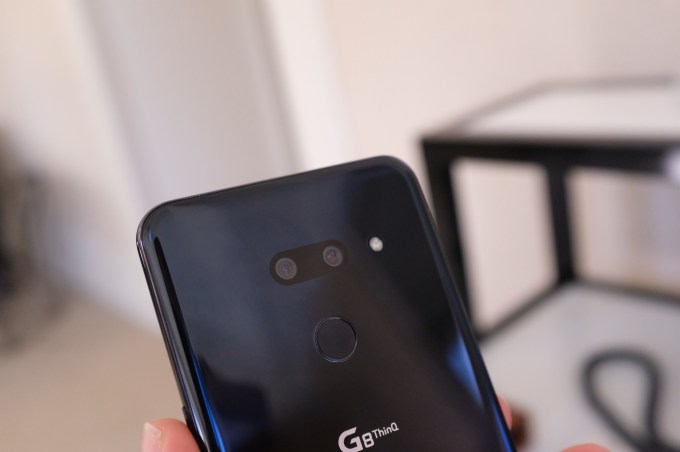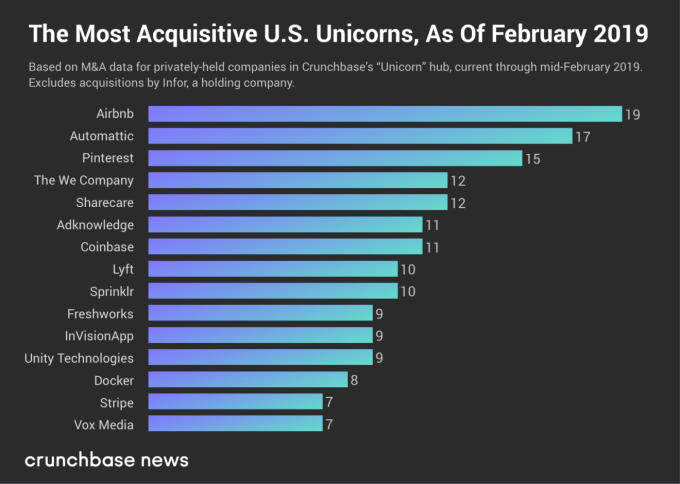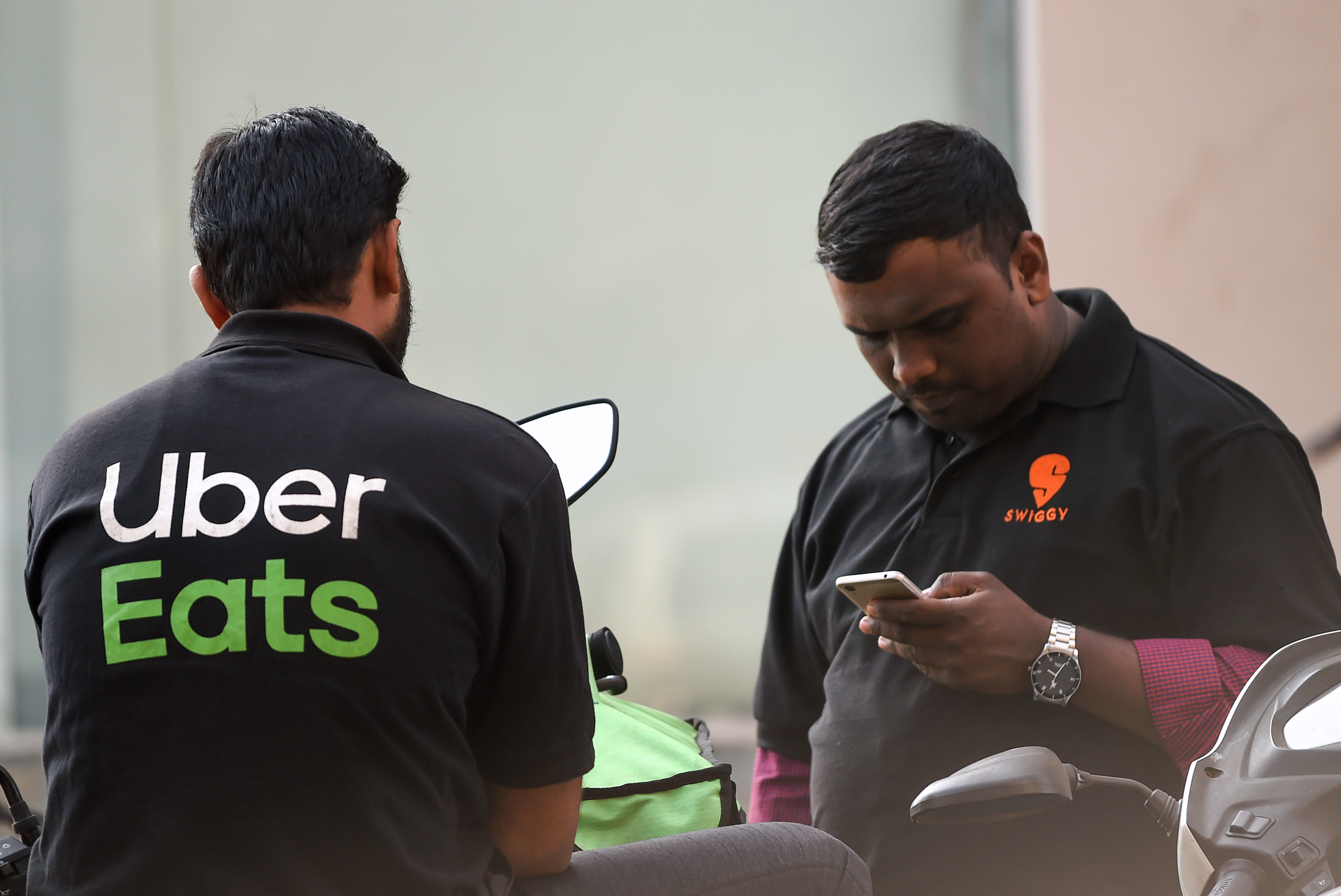Through the Extra Crunch EC-1 on Patreon, I dove into Patreon’s founding story, product roadmap, business model and metrics, underlying thesis, and competitive threats. The six-year-old company last valued around $450 million and likely to soon hit $1 billion is the leading platform for artists to run membership businesses for their superfans.
As a conclusion to my report, I have three core takeaways and some predictions on the possibility of an IPO or acquisition in the company’s future.
The future is bright for creators
First, the future is promising for independent content creators who are building engaged, passionate fanbases.
There is a surge of interest from the biggest social media platforms in creating more features to help them directly monetize their fans — with each trying to one-up the others. There are also a growing number of independent solutions for creators to use as well (Patreon and Memberful, Substack, Pico, etc.).
We live in an economy where a soaring number of people are self-employed, and the rise of more monetization tools for creators to earn a stable income will open the door to more people turning their creative talents into a part-time or full-time business pursuit.
Membership is a niche market and it’s unclear how big the opportunity is
Patreon’s play is to own a niche category of SMB who it recognizes has particular needs and provide them with the comprehensive suite of tools and services they need to manage their businesses. A large portion of creators’ incomes will need to go to Patreon for it to someday earn billions of dollars in annual revenue.
The market for content creators to build membership businesses appears to be growing, however, membership will be only one piece of the fan-to-creator monetization wave. The number of creators who are a fit for the membership business model and could generate $1,000-500,000 per month through Patreon (its target customer profile) is likely measured in the tens of thousands or low hundreds of thousands right now, rather than in the millions.
To get a sense of the revenue math here, Patreon will generate about $35 million this year from the 5,000-6,000 creators who fit its target customer profile; if you believe this market is expanding at a fast clip, capturing 10% of the revenue (Patreon’s current commission) from 20,000 such creators could bring in $140 million. And that’s without factoring in the potential success of Patreon implementing premium pricing options, which is a high priority. If Patreon can increase its commission from 10% to 15%, it would need around 47,500 creators in the $1,000-$500,000/month range (9.5x its current number) to reach $500 million in revenue from them.
There is a compelling opportunity for a company to provide the dominant business hub for creators, with tools to manage their fan (i.e. customer) relationships across platforms and to manage back-office logistics. At a certain point it taps out though.
That’s one of the reasons why Patreon’s vision includes extending into areas like business loans and healthcare. For companies targeting small and medium businesses like Shopify, Salesforce and Dropbox, there is so much more growth tied to their core products that there is no need for them to consider such unrelated offerings as business loans. Patreon has to both expand its market share and also expand the services it offers to those customers if it wants to reach massive scale.
Patreon faces serious competition but is evolving in the right direction
Patreon is the leading contender in this market, and there’s a role for an independent player even if Facebook, YouTube, and other distribution platforms push directly competing functionality. Patreon will need to make three important changes to compete effectively: more aggressively segment its customers, make the consumer-facing side of its platform more customizable by creators, and build out more lightweight talent management services.
What’s next for Patreon?
Having raised over $100 million in funding over the last six years, what is the path to a liquidity event for investors and employees?
In a worst case scenario, it is unlikely the company would go out of business even if it fell into disarray because it would be strategic for several large companies to takeover at a discount. Patreon may be on the path to IPO (as CEO Jack Conte hopes), but I find it more likely that the company gets acquired sometime in the next couple years.
Path to IPO?
If a public offering is in Patreon’s future, it’s several years out. It now defines itself as a SaaS company and has a plan to earn a higher blended commission on the sales of its customers through premium pricing options. It is a frequently misunderstood company, however, and needs to prove that a big market exists for mid-tail creators building membership businesses.
According to a summary by Spark Capital’s Alex Clayton, SaaS companies who went public in 2018 typically:
-
- had $100-200 million in revenue over the prior twelve months,
- were 14 years old,
- had an average year-over-year revenue growth rate of ~40%,
- earned 90% of revenue from subscriptions,
- had a median gross margin of 73%,
- ranged from roughly 500 to 2500 employees,
- had a raised a median of $300 million in VC funding,
- and IPO’d with a median market cap of $2 billion
Public market companies to benchmark it against will be Shopify (as SaaS infrastructure for small businesses selling to, and managing payments from, consumers) and Zuora (Patreon can be viewed as a media-specific SMB alternative to Zuora’s “Subscription Relationship Management” system). Compared to Shopify, whose market of SMB e-commerce businesses globally is easily understood to be enormous, Patreon would face more skepticism from public investors about the market size of mid-tail content creators.
Patreon’s gross margins can’t be much more than 50% given that almost half of revenue is going toward payment processing. Patreon mirrors Shopify’s topline revenue growth in the run up to its 2015 IPO: Shopify reported $23.7 million for 2012, $50.3 million for 2013, $105 million for 2014 and I estimate Patreon brought in $15 million for 2017, $30 million for 2018, and will hit $55 million for 2019. Most of Shopify’s revenue came from subscriptions, however, with only 37% coming from the “merchant solutions” services where Shopify had to pay out payment processing fees. Patreon’s revenue net of payment processing fees is closer to $7.5 million for 2017, $15 million for 2018, and $27 million (predicted) for 2019.
There’s a lot of capital chasing late-stage startups right now. How long that remains the case is unknown, but Patreon can likely raise the funding to operate unprofitably a few more years — getting topline revenue closer to $150-200 million, proving creators will adopt premium pricing, and showcasing its ability to compete with Facebook and YouTube in a growing market. In that case, it could become a strong IPO candidate.
The acquisition route
The other scenario, of course, is that a larger company buys Patreon. In particular, one of the large social media platforms building directly competitive features may decide it is easier to buy their expansion into membership than build it from scratch. Patreon is the dominant platform without any noteworthy direct competitor among independent companies, so acquiring it would immediately put the parent company in a market-leading position. Competing social platforms wouldn’t have another large Patreon-like startup to acquire in response.
There are three companies that jump out as both the most likely acquirers. Each of these M&A scenarios would be mutually beneficial: advancing Patreon’s mission and providing strategic value to the parent. The first two companies are probably obvious, but the last one may be less known to TechCrunch readers.
Facebook
I highlighted Facebook as the top competitive threat to Patreon. This is also why it’s a natural acquirer. Patreon would bring fan relationship management to the Facebook ecosystem and particularly the company’s Creator App with CRM and analytics specifically fit for creators’ needs. It would also bring a stable of 130,000 creators of all types to make Facebook the primary infrastructure through which they engage their core fans.
Facebook is prioritizing human relationships more and clickbait content less. A natural replacement for the flood of news articles and viral videos is deeper engagement with the creators that Facebook users care the most about.
Since the annual churn rate of Patreon creators who earn $500 per month or more is under 1%, the ~9,200 creators who fit that category would likely stick around as Patreon’s infrastructure integrates with Facebook’s; the vast majority probably already have Facebook pages and possibly use the Creator App.
Facebook’s data on who fans are, what they like, and who their friends are is unrivalled. The insights Facebook could provide Patreon’s creators on their fans could help them substantially grow their number of patrons and build stronger relationships with them.
Like all major social media platforms, Facebook has partnership teams vying to get major celebrities to use its products. Patreon could lock the mid-tail of smaller (but still established) creators into its ecosystem, which means more consumer engagement, more time well spent, and more revenue through both ads and fan-to-creator transactions. Owning and integrating Patreon could have a much bigger financial benefit than solely revenue from the core Patreon product.
As a Facebook subsidiary, Patreon would stick more closely to being a software solution; it wouldn’t develop as robust of a creator support staff and the vision that it may expand to offer business loans and health insurance to creators would almost surely be cut. Facebook would also probably discontinue supporting the roughly 23% of Patreon creators who make not-safe-for-work (NSFW) content.
Given Patreon’s mission to help creators get paid, it may make a bigger impact as part of Facebook nonetheless. Facebook’s ecosystem of apps is where creators and their fans already are. Tens of thousands of creators could start using Patreon’s CRM infrastructure overnight and activating fan memberships to earn stable income.
A Facebook-Patreon deal could happen at any point. I think a deal could just as likely happen in a few months as in a few years. The key will be Facebook’s business strategy: does it want to build serious infrastructure for creators? And does it believe paywalled access to some content and groups fits the future of Facebook? The company is experimenting with both of those right now, but doesn’t appear to be committed as of yet.
YouTube
The other most likely acquirer is Google-owned YouTube. Patreon was birthed by a YouTuber to support himself and fellow creators after their AdSense income dropped substantially. YouTube is becoming a direct competitor through YouTube Memberships and merchandise integrations.
If Patreon shows initial success in getting creators to adopt premium pricing tiers and YouTube sees a strong response to the membership functionality it has rolled out, it’s hard to imagine YouTube not making a play to acquire Patreon and make membership a priority in product development. This would create a whole new market for it to dominate, making money by selling business features to creators and encouraging fan-to-creator payments to happen through its platform.
In the meantime, it seems that YouTube is still searching for an answer to whether membership fits within its scope. It previously removed the ability for creators to paywall some videos and it could view fan-to-creator monetization efforts as a distraction from its dominance as an advertising platform and its growing strength in streaming TV online (through the popular $40/month YouTube TV subscription).
YouTube is also a less compelling acquirer than Facebook because the majority of Patreon’s creators don’t have a place on YouTube since they don’t produce video content (as least as their primary content type). Unless YouTube expands its platform to support podcasts and still images as well, it would be paying a premium to acquire the subset of Patreon creators that it wants. Moreover, as much as a quarter of those may be creators of NSFW content that YouTube prohibits.
YouTube is the potential Patreon acquirer people immediately point to, but it’s not as tight of a fit as Facebook would be…or as Endeavor would be.
Endeavor
The third scenario is that a major company in the entertainment and talent representation sphere sees acquiring Patreon as a strategic play to expand into a whole new category of talent representation with a technology-first approach. There is only one contender here: Endeavor, the $6.3 billion holding company led by Ari Emanuel and Patrick Whitesell that is backed by Silver Lake, Softbank, Fidelity, and Singapore’s GIC and has been on an acquisition spree.
This pairing shows promise. Facebook and YouTube are the most likely companies to acquire Patreon, but Endeavor may be the company best fit to acquire it.
Endeavor is an ecosystem of companies — with the world’s top talent agency WME-IMG at the center — that can each integrate with each other in different ways to collectively become a driving force in global entertainment, sports and fashion. Among the 25+ companies it has bought are sports leagues like the UFC (for $4 billion) and the video streaming infrastructure startup NeuLion (for $250 million). In September, it launched a division, Endeavor Audio, to develop, finance and market podcasts.
Endeavor wants to leverage its talent and evolve its revenue model toward scalable businesses. In 2015, Emanuel said revenue was 60% from representation and 40% from “the ownership of assets” but quickly shifting; last year Variety noted the revenue split as 50/50.
In alignment with Patreon, Endeavor is a big company centered on guiding the business activities of all types of artists and helping them build out (and maximize) new revenue streams. When you hear Emanuel and Whitesell, they reiterate the same talking points that Patreon CEO Jack Conte does: artists are now multifaceted, and not stuck to one activity. They are building their own businesses and don’t want to be beholden to distribution platforms. Patreon could thrive under Endeavor given their alignment of values and mission. Endeavor would want Patreon to grow in line with Conte’s vision, without fearing that it would cannibalize ad revenue (a concern Facebook and YouTube would both have).
In a June interview, Whitesell noted that Endeavor’s M&A is targeted at companies that either expand their existing businesses or ones where they can uniquely leverage their existing businesses to grow much faster than they otherwise could. Patreon fits both conditions.
Patreon would be the scalable asset that plugs the mid-tail of creators into the Endeavor ecosystem. Whereas WME-IMG is high-touch relationship management with a little bit of tech, Patreon is a tech company with a layer of talent relationship management. Patreon can serve tens of thousands of money-making creators at scale. Endeavor can bring its talent expertise to help Patreon provide better service to creators; Patreon would bring technology expertise to help Endeavor’s traditional talent representation businesses better analyze clients’ fanbases and build direct fan-to-creator revenue streams for clients.
If there’s opportunity to eventually expand the membership business model among the top tiers of creators using Patreon.com or Memberful (which Conte hinted at in our interviews), Endeavor could facilitate the initial experiments with major VIPs. If memberships are shown to make more money for top artists, that means more money in the pockets of their agents at WME-IMG and for Endeavor overall, so incentives are aligned.
Endeavor would also rid Patreon of the “starving artist” brand that still accompanies it and could open a lot of doors in for Patreon creators whose careers are gaining momentum. Perhaps other Endeavor companies could access Patreon data to identify specific creators fit for other opportunities.
An Endeavor-Patreon deal would need to occur before Patreon’s valuation gets too high. Endeavor doesn’t have tens of billions in cash sitting on its balance sheet like Google and Facebook do. Endeavor can’t use much debt to buy Patreon either: its leverage ratio is already high, resulting in Moody’s putting its credit rating under review for downgrade in December. Endeavor has repeatedly raised more equity funding though and is likely to do so again; it canceled a $400M investment from the Saudi government at the last minute in October due to political concerns but is likely pitching other investors to take its place.
Patreon has strong revenue growth and the opportunity to retain dominant market share in providing business infrastructure for creators — a market that seems to be growing. Whether it stays independent and can thrive in the public markets sometime or whether it will find more success under the umbrella of a strategic acquirer remains to be seen. Right now the latter path is the more compelling one.

Source: Tech Crunch
















